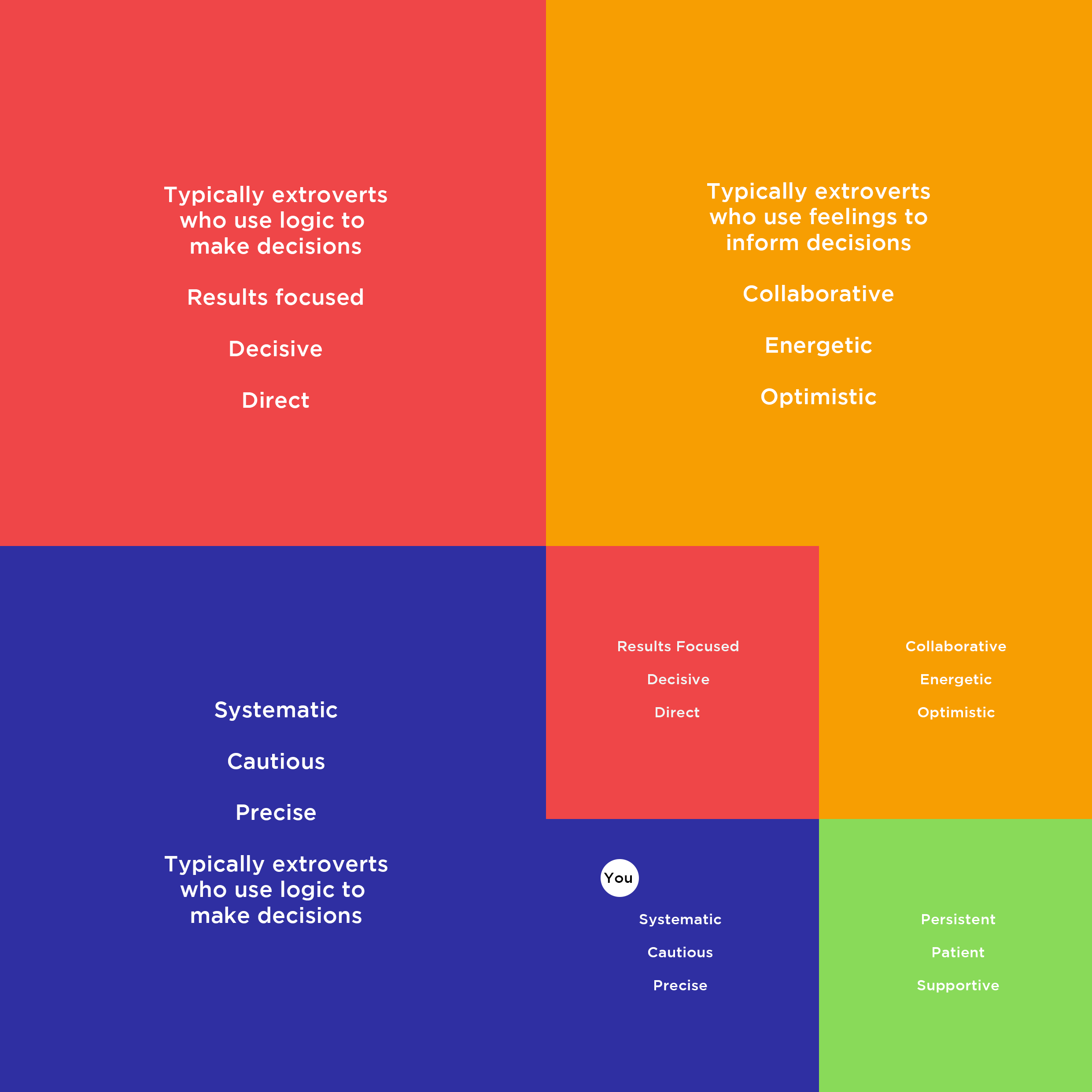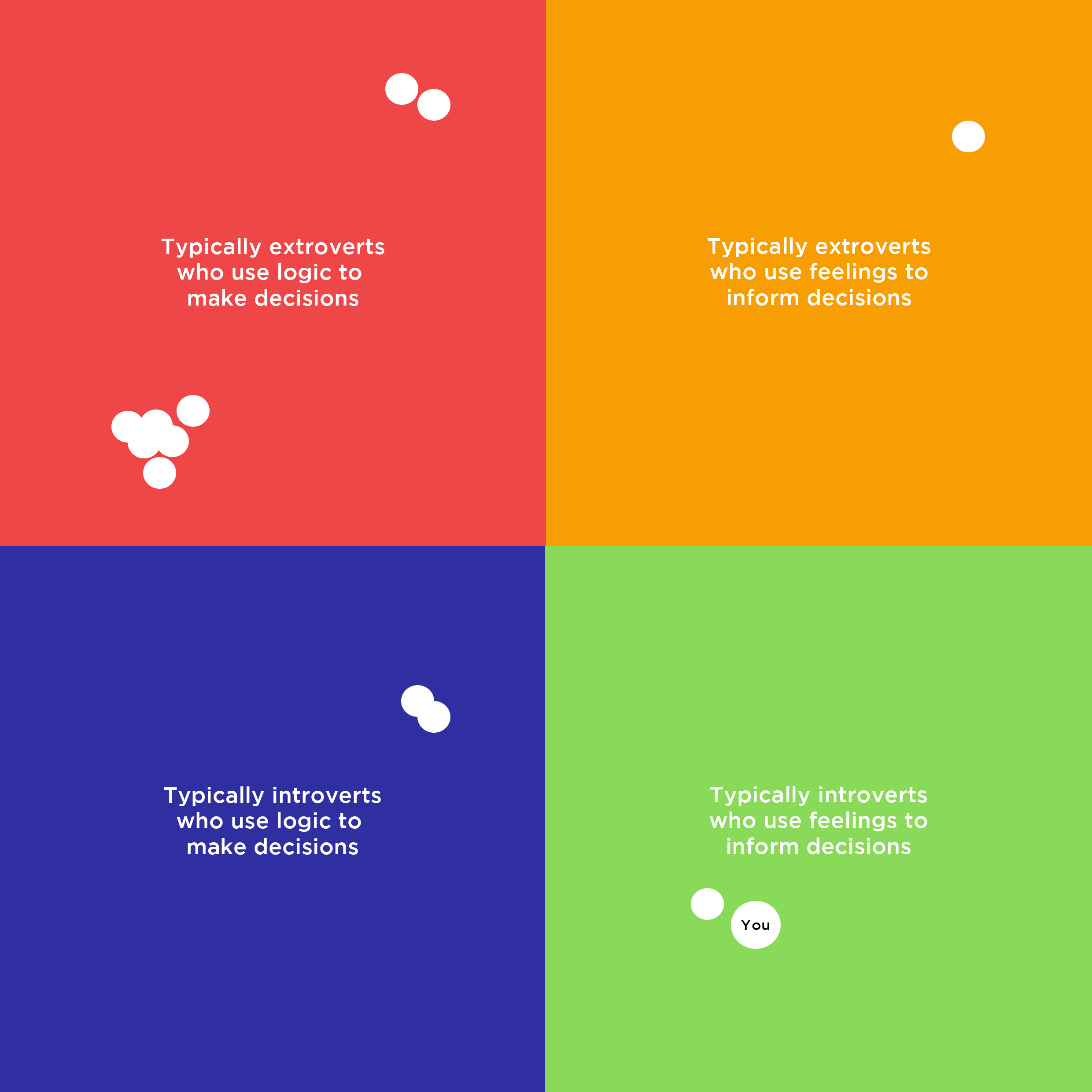- Individual and team preferences and styles cannot be quickly and easily assessed so leaders cannot take these attributes into account when building and developing teams
------------------------
- Improvements in individual and team performance through easily accessible insights that were not previously available
- Creates a demand to gain deeper insights in support of individual and team development
|
- Providing leaders, teams and boards with valuable communication insight that helps improve individual and team performance
- Identifying and understanding preferred styles improves interpersonal relationships and communication
- Improving ways in which members engage with each other leads to the development and maintenance of more effective and higher performing teams
|
- MQProfile™aligns with the 4 dominant profile types in the DISC profiling system – Dominant (Red), Influential (Yellow), Steady (Green) and Conscientious (Blue)
- Before a meeting starts, members receive an email asking them to choose the profile that most accurately reflects their primary profile. Members are then taken automatically to the website to identify their secondary profile (which could be the same as their primary)
- The left figure (above) shows the final position of their dot as an amalgamation of their primary and secondary profiles.The right figure (above) shows all member profiles amalgamated into an MQ-Team Profile
- The sample MQ-Team Profile (above) shows a predominance of “D” (Dominant) profiles, which means that meetings will be quick paced and decisive. There may be lots of talking over each other and conflict may arise as each “D” aims to exert authority. Ideas may be ignored and there may be little support for taking on rudimentary tasks
- This team may wish to consider:
- What might be the implications of having this mixture of member profiles?
- What, if any, profiles are missing and how might this affect the value from the meeting?
- Who may feel isolated and how can we include them more and benefit from their perspective?
|


